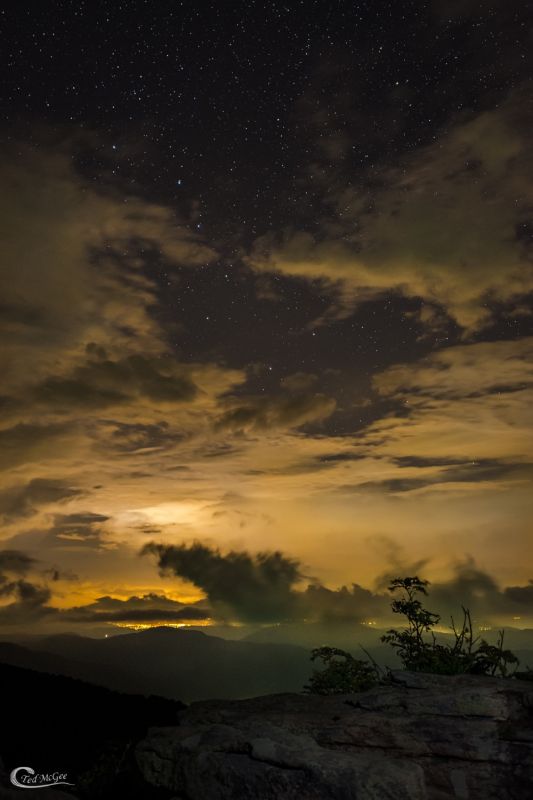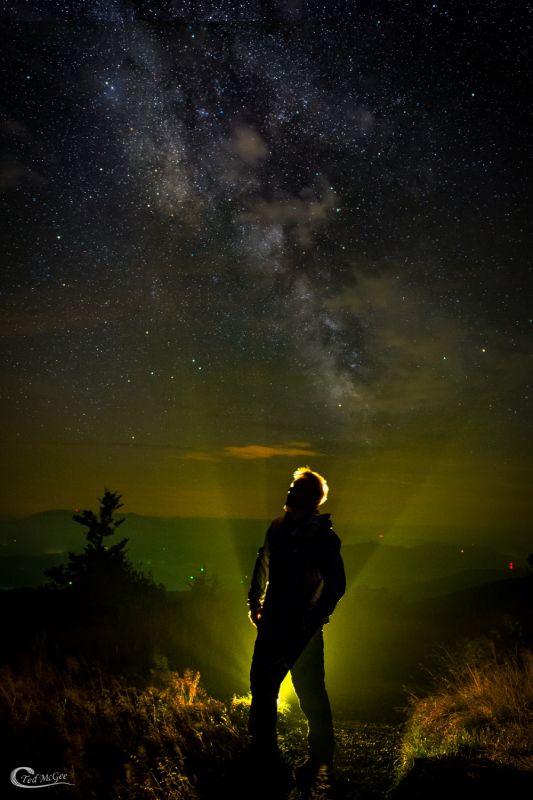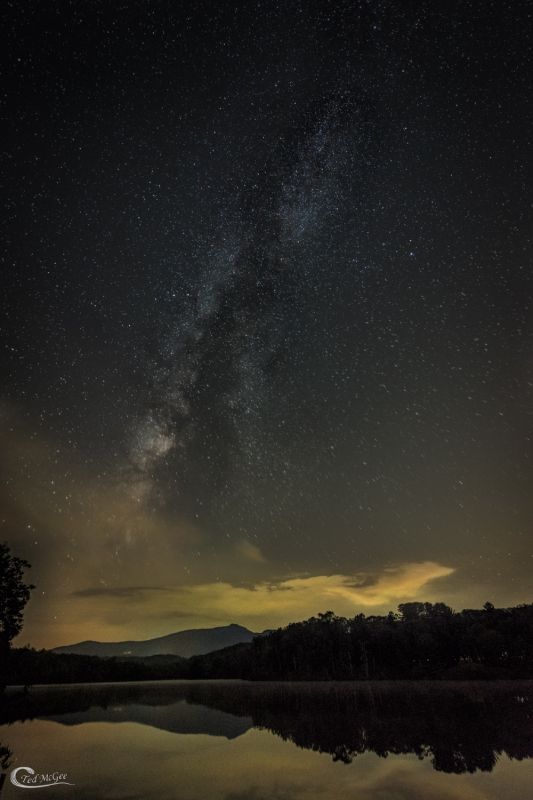
If I were to put a label on the type of photography I enjoy most it would be Adventure Photography. Dora and I both enjoy getting out and exploring the natural beauty of the world around us. We learned about the Mountains to Sea Photography Workshops through fellow photographer and friend Tony Gouge. Tony had been on several of their outings and spoke highly of them. Dora and I are avid sailors as well as love getting out and exploring the mountains and wilderness areas we can get to. The workshops sounded perfect.
On August 14 Dora and I headed to Boone, NC to join 10 other photographers for an astrophotography workshop. We were met by Mountains to Sea host Alistair Nicol and Tommy White. Alistair and Tommy are professional photographers and would be our mentors and guides for the weekend. We were joined by Carrie Chiu, Mike Baggett, Laura Marsh, Sara Chase, Anita Perzan Mosteller, Bruce Heldman, Tony Gouge, and Amy Little, adventure photographers all.
Blowing Rock Ale House
Our first stop was the Blowing Rock Ale House and Inn for dinner and a chance to get to know everyone. Alistair and Tommy provided instruction and information on camera settings and tips for photographing the stars and the Milky Way. We were given directions to our first meet up at Price Lake. Price Lake is near Boone, NC. It is a beautiful and scenic spot with Grandfather Mountain in the background. The plan was to arrive in time to capture a sunset and get setup before dark for the Milky Way.
Price Lake
One of the things nature photographers cannot control is the weather. Thunderstorms had moved in. The sky was cloudy and we could see distant lightning. Looking at weather radar it appeared the storms would clear out a little later that night. After taking some photos around the lake we made plans to meet back at Price Lake around 11:00 PM. I captured a beautiful image with lightning in the background.
We returned to Price Lake later that night to find the storms breaking up and the stars beginning to appear. Once our eyes adjusted to the dark we could see the Milky Way clearly. We stayed at Price Lake photographing the Milky Way until about 3 AM. Fellow photographer Amy Little captured this stunning image. You can see the mist rising off Price Lake and Grandfather Mountain in the background.
 Roan Mountain
Roan Mountain
After getting a little sleep we met up Saturday morning. We spent most of the day in a classroom environment learning how to get the most from our Milky Way photographs. Later in the afternoon we made plans for dinner and decided on a location for the photoshoot that night. We ate dinner at Pepper’s restaurant and headed for Roan Mountain State Park, near Elizabethton, TN. The weather again threatened to spoil our plans but it looked like the cloud cover and rain would clear later that night.
We followed the Appalachian Trail about a mile up Roan Mountain to Round Bald. The sun was setting through the clouds behind another hill. We had a choice of staying on Round Bald to photograph the sunset there or hike over to Janes Bald, a little higher up for a different view with some nice rock outcroppings. The group split up. Five of us, led by Alistair, hiked over to Janes Bald, another ½ to ¾ miles away. The rest stayed on Round Bald accompanied by Tommy White.
There wasn’t a wrong decision. Those who stayed at Round Bald had opportunity for beautiful images as the sun set behind the hill. Those of us who opted for Janes Bald could just catch the sun through the clouds as it set. Storms were still in the area and those that stayed on Round Bald got more rain and those that opted for Janes Bald moved off the bald for a while in case lightning became a problem. It didn’t matter where you were, once the storms cleared there was ample opportunity to photograph the Milky Way. I took the following images from Janes Bald.
 The storms started to clear away around 11:00 PM. We followed the Appalachian Trail back up to Janes Bald. Alistair took this gorgeous image of us on the trail as we worked our way back up Janes Bald. The streak of light you see on the mountain is from our headlamps.
The storms started to clear away around 11:00 PM. We followed the Appalachian Trail back up to Janes Bald. Alistair took this gorgeous image of us on the trail as we worked our way back up Janes Bald. The streak of light you see on the mountain is from our headlamps.
 Back on Janes Bald I was able to capture a beautiful image of the Big Dipper playing peek-a-boo with the clouds. Clouds and fog cleared away from the Milky Way soon after and all of us got excellent images.
Back on Janes Bald I was able to capture a beautiful image of the Big Dipper playing peek-a-boo with the clouds. Clouds and fog cleared away from the Milky Way soon after and all of us got excellent images.
Around midnight it was time to head back to cars, but the fun wasn’t over yet.
As we climbed back up Round Bald the fog was building. Alistair was last in line and he noticed how our headlamps played against the fog. A photo op presented itself. We set headlamps on the ground to act as a backlight. Alistair captured several images of our group. I was able to capture an awesome image of Alistair with the Milky Way as a backdrop. Alistair held still for a long time for this one.
Kojay's Café and Wrapup
Sunday morning was a wrap up. We meet at Kojay’s Café in Blowing Rock for breakfast. It was chance to share stories, what we learned, and exchange contact information. We had an amazing time and look forward to being able to repeat the experience.
2015 Boone
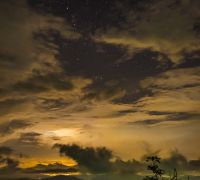
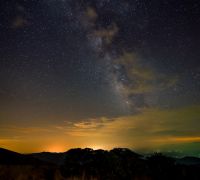
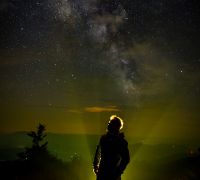
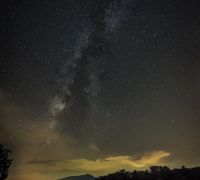
What you need to Photograph the Milky Way
The Milky Way is best photographed in the summer months, however; it can also be seen and photographed as early as March and as late as early October. In the western half of the United States dark skies are plentiful and it is easier find to good locations. We live in the south where there is a lot of light pollution, however; we are still able to find good locations. There are numerous dark sky applications on the web and for your smart phone that can help you locate areas dark enough to see the Milky Way. A place to start is http://darksitefinder.com/maps/world.html.
You'll need a camera capable of taking time exposures with the ability to adjust your ISO. Most images you see in this blog were shot at ISO 3200 between 10 and 15 seconds. You will need a sturdy tripod and a cable release. For shooting the Milky Way a wide angle lens is a must. For a full sensor camera look for something around 14mm and f/2.8. All the photos I took of the Milky Way were taken with a Nikon 14-24mm f/2.8 lens at 14mm f/2.8. There are some relatively inexpensive options. For example, Rokinon offers a good 14mm f/2.8 lens for less than $400. Shooting with a crop sensor camera is also possible, but lens selections are more limited. Tokina offers an 11-16mm f/2.8. You can certainly use a 14mm but you will be cropped more tightly on the Milky Way. With a bit of research you will be able to find and select an appropriate lens. Consider renting a lens if you don't already have one, especially if you're uncertain that you will use the lens again.
A headlamp that can provide white and red light is very useful. The red light preserves night vision for working with your camera and the white light helps you get around. Don't forget bug repellant, warm clothes, snacks, and water.
Mountains to Sea Photography Workshops
It's dark out there, don't go alone. Astrophotography is best enjoyed with friends or a group of fellow photographers. If you are new to astrophotography consider a workshop such as Mountains to Sea Photography Workshops. They will take you to some awesome locations and provide excellent advice. For more information about their workshops click on the following link.

